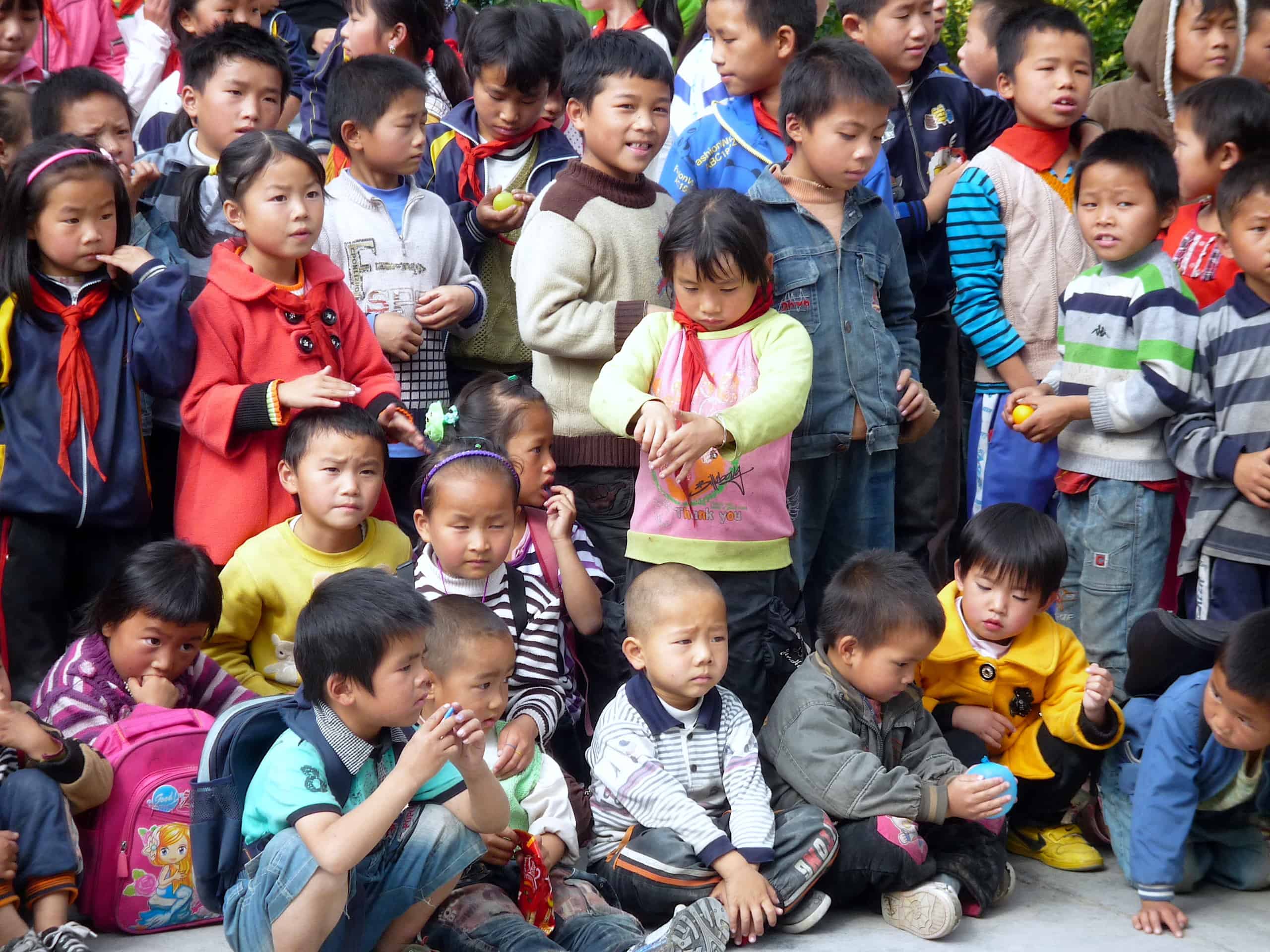
Credit: Thomas Galvez, Creative Commons
NEW YORK – China’s recently released population census confirms the persistence of the country’s alarming excess of males relative to the global norm. This numerical imbalance from birth onward has several significant economic implications — and not only for China.
Because women live longer than men on average, most countries’ populations have more females than males. In the United States, for example, there were 96 males per 100 females in 2020. China, by contrast, has 105 males for every 100 females, according to the latest census. Chinese women live about three years longer than Chinese men on average, so the “excess males” are entirely the result of an unusually high ratio of boys to girls at birth.
The sex ratio at birth is normally around 106 boys per 100 girls. Because boys and young men have a slightly higher mortality rate, and because husbands tend to be somewhat older than wives, such a ratio at birth is nature’s way of ensuring a roughly 1:1 ratio by the time they reach reproductive age.
Although China’s male-to-female ratio at birth was close to this natural rate in the 1970s, a combination of factors fueled its steady rise. The most significant were a preference for sons, the availability of ultrasound and other technologies that enable expectant parents to know a fetus’s sex, and the government’s imposition in 1980 of a strict family-planning policy that prevented most families from having as many children as they desire.
Some parents have opted for sex-selective abortions. The government tried to forbid the practice, but it is hard to prevent as long as abortions are used as a means of complying with birth limits. As a result, the sex ratio at birth increased steadily, peaking at about 121 boys per 100 girls in 2009. According to the recent population census, this ratio has since declined to 111.3 boys for every 100 girls — more balanced than before, but still significantly higher than it would be in the absence of sex-selective abortions.
China’s “excess” of male births results in a large number of young men being unable to marry. In mathematical terms, about one in nine young men in China cannot find a girlfriend or wife. This problem is even more serious in regions such as rural Anhui and Guangdong, where as many as one in six young men has difficulty finding a marriage partner.
In a series of research papers with various co-authors, I have documented some of the large and sometimes surprising economic consequences of this skewed sex ratio for China and the world. For starters, young men — and especially parents with unmarried sons — increase their savings rates substantially in order to enhance their relative competitiveness in the dating and marriage markets. In a 2011 paper, Xiaobo Zhang and I found that the rise in the male-female ratio in China’s pre-marital-age cohort from 1990 to 2007 accounted for about half of the increase in the household savings rate during that period.
An increase in the savings rate tends to boost a country’s trade surplus. In 2013, Qingyuan Du and I showed that a rise in China’s male-female ratio may have contributed to between one-third and one-half of the increase in its trade surplus with other countries. The sex imbalance thus likely underpins an important source of tension between China and the U.S. Yet bilateral engagement has paid scant attention to this linkage.
The latest population census, which shows that the sex ratio at birth remains unbalanced, tells us that discrimination against girls persists.
As I show in a forthcoming research paper with Zhibo Tan and Xiaobo Zhang in the Journal of Development Economics, China’s unbalanced male-female ratio also contributes to unsafe workplace practices, leading to many preventable injuries and deaths. A shortage of potential brides causes many parents with sons of marriageable age to work more and seek higher-paying but potentially dangerous jobs in sectors such as mining and construction, or jobs exposing them to hazardous materials and extreme heat or cold. Because people are more willing to accept such jobs, employers often invest less in workplace safety, which in turn increases work-related injuries and mortality.
My co-authors and I found that accidental injuries and workplace deaths are significantly higher in areas with a more severe shortage of young women relative to men. And parents with sons of marriageable age account for a disproportionate share of the victims.
The sex-ratio imbalance can self-correct, but only slowly. Seeing parents with sons shouldering greater financial and physical burdens to help their sons avoid involuntary bachelorhood, many young couples may decide that having a daughter is as good or better. But the latest population census, which shows that the sex ratio at birth remains unbalanced, tells us that discrimination against girls persists.
As China worries about the country’s low population growth, it has progressively relaxed (but not yet ended) its family-planning policy. Policymakers should now go further, and provide a significant financial reward to parents of baby girls. Such a measure would simultaneously hasten the correction of the sex-ratio imbalance at birth and arrest the decline in the overall birth rate.
A more balanced sex ratio will lessen the need for many Chinese households to sacrifice current consumption for higher savings, and foster safer working environments. It would also help to reduce trade tensions with other countries.
Copyright: Project Syndicate, 2021.

Shang-Jin Wei, a former chief economist at the Asian Development Bank, is Professor of Finance and Economics at Columbia Business School and Columbia University’s School of International and Public Affairs.



